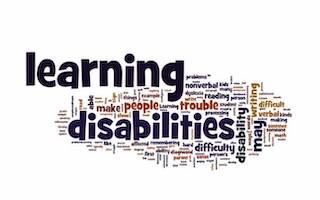Education for All and Learning Disabilities in India
‘Education for all’ still remains a distant dream, and for the disabled, it is even more remote in India. A recent survey of the National Center for Promotion of Employment for Disabled People (NCPEDP), revealed that only 1.2 per cent of the disabled in India has had any form of education. In its effort to conduct an all-India school-level survey, NCPEDP found that out of the 89 schools, 34 did not have a single disabled student, and unfortunately, 18 of them had a policy against giving admission.
Disabilities such as low vision, speech or hearing impairment, locomotors disability including those arising from cerebral palsy and allied disorders, thalassemia, dyslexia and aphasia have been recognized as major forms of learning disabilities. Among all these forms of disabilities, dyslexia became the recent entrant only after the information of the Hon’ble High Court of Delhi took note of the fact that the Central Board of Secondary Education (CBSE) has already recognized dyslexia as an impairment.
The hard fact is that Learning Disability (LD) is real and a stumbling block for a nation’s development process. The question is, why and how does it affect development? A person can be of average or above-average intelligence, without any sensory problems (like blindness or hearing impairment), and yet struggle to keep up with people of the same age in learning and regular functioning. According to the National Center for Learning Disabilities, LD is “ a neurological disorder that affects the brain's ability to receive, process, store and respond to information. The term learning disability is used to describe the seeming unexplained difficulty a person of at least average intelligence has in acquiring basic academic skills”. These skills are essential for success at school and at the workplace, and for coping with life in general. LD is not a single disorder. It is a term that refers to a group of disorders in listening, speaking, reading, writing, and mathematics. The other features of LD are: (a) a distinct gap between the level of achievement that is expected and what is actually being achieved (b) difficulties that can become apparent in different ways with different people (c) difficulties with socio-emotional skills and behaviour
Specific reading disabilities, in children and adults, have been classified as 'dyslexia' or 'developmental dyslexia' or even 'specific developmental dyslexia'. These terms are in use interchangeably with LD. The identification and description of LD began in the Western world in the 1950s and 60s. The major developments of the LD movement during this period centered on children, who appeared normal in many intellectual skills but displayed a variety of cognitive limitations that seemed to interfere with their ability to read, write and learn in the classroom. These were essentially deficient general learning processes centering mostly on what we today call distractibility, hyperactivity and visual-perceptual and perceptual-motor problems.
The LD movement in India is of a recent origin and is today comparable with that of its Western counterpart. Western scholars attributed reports of lower incidences of LD in the Eastern world to the general lack of awareness and sensitivity among educationists to the specific difficulties faced by children learning to read in overcrowded classrooms. The Nalanda Institute report has highlighted that in India during the last two-decade or so, there has been an increasing awareness and identification of children with LD. Despite this growing interest India still does not have a clear idea about the incidence and prevalence of LD. Unfortunately, epidemiological studies of LD are fraught with difficulties ranging from the very definition of LD, identification, assessment, to socio-cultural factors unique to India.
In India, around 13-14% of all school children suffer from learning disorders. Unfortunately, most schools fail to lend a sympathetic ear to their problems. As a result, these children are branded as failures. Samir Parikh, a child psychiatrist opines that dyslexia is not a disease, but it’s a lifelong problem and presents challenges that need to be overcome daily. He is however optimistic and argues that with proper diagnosis, appropriate education, hardwork and support from family, friends, teachers and others, a dyslexic can lead a successful and productive life.
What should then be the future strategy to cope and overcome the problem of dyslexia? The first step in this strategy should be early detection, acceptance by parents and broad awareness among the academic community and above all a mature handling of the problem. At the government level, there is a need to formulate a constructive policy in this regard. To see that these steps are implemented, school vigilance and parental awareness are equally essential.
